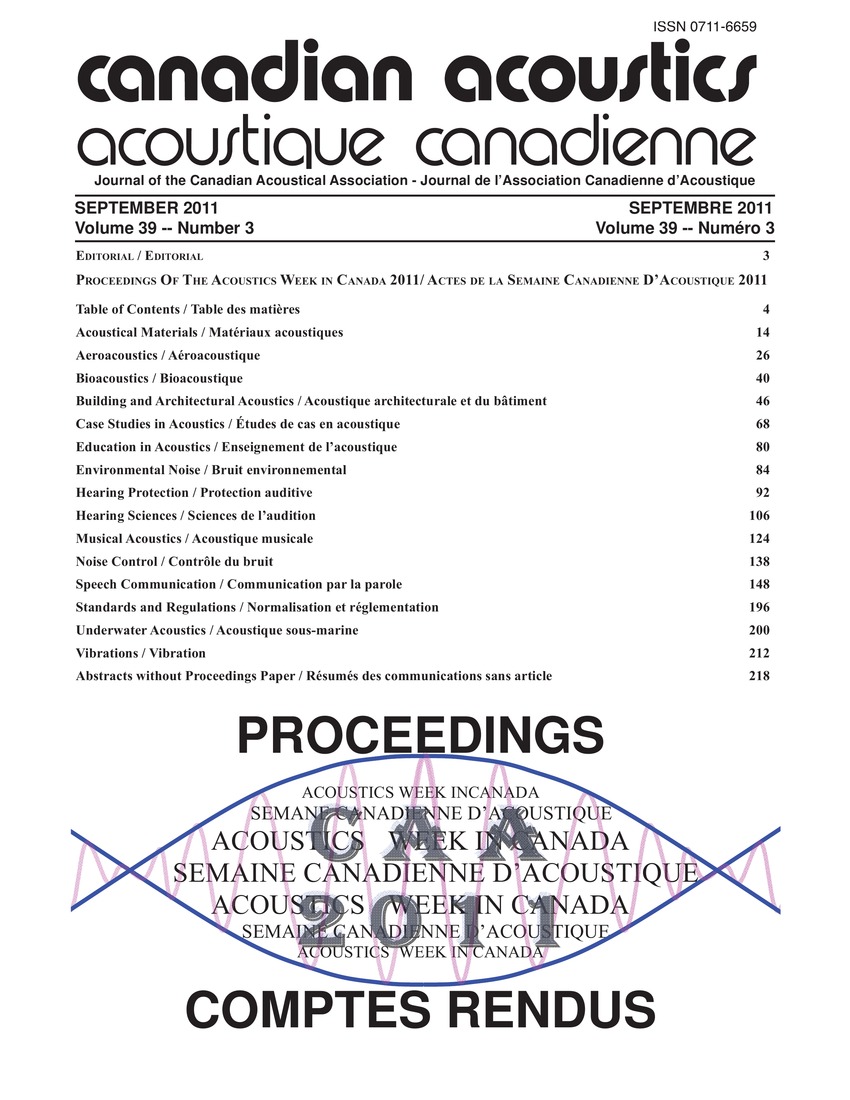ASTM metrics for rating speech privacy of closed rooms and open plan spaces
Keywords:
Building spaces, Highly-correlated, Speech privacy, Speech soundsAbstract
This article discusses the relationship between the two metrics, and their suitability for use in any type of space, including spaces not fitting the definition of either open or closed. The E2638 method provides a rating of the average performance of a closed room - without any assumptions as to talker location - to each of a number of listener positions outside the room, close to the room boundaries. E2638 includes a table of categories that identifies the frequency with which speech sounds would be audible or intelligible for various SPC values. The high correlation for both metrics implies both are useful for rating intelligibility over a wide range. The two current ASTM metrics for rating speech privacy of building spaces are highly correlated, and both seem well suited for use in conditions where speech is intelligible, such as in open plan spaces.Additional Files
Published
How to Cite
Issue
Section
License
Author Licensing Addendum
This Licensing Addendum ("Addendum") is entered into between the undersigned Author(s) and Canadian Acoustics journal published by the Canadian Acoustical Association (hereinafter referred to as the "Publisher"). The Author(s) and the Publisher agree as follows:
-
Retained Rights: The Author(s) retain(s) the following rights:
- The right to reproduce, distribute, and publicly display the Work on the Author's personal website or the website of the Author's institution.
- The right to use the Work in the Author's teaching activities and presentations.
- The right to include the Work in a compilation for the Author's personal use, not for sale.
-
Grant of License: The Author(s) grant(s) to the Publisher a worldwide exclusive license to publish, reproduce, distribute, and display the Work in Canadian Acoustics and any other formats and media deemed appropriate by the Publisher.
-
Attribution: The Publisher agrees to include proper attribution to the Author(s) in all publications and reproductions of the Work.
-
No Conflict: This Addendum is intended to be in harmony with, and not in conflict with, the terms and conditions of the original agreement entered into between the Author(s) and the Publisher.
-
Copyright Clause: Copyright on articles is held by the Author(s). The corresponding Author has the right to grant on behalf of all Authors and does grant on behalf of all Authors, a worldwide exclusive license to the Publisher and its licensees in perpetuity, in all forms, formats, and media (whether known now or created in the future), including but not limited to the rights to publish, reproduce, distribute, display, store, translate, create adaptations, reprints, include within collections, and create summaries, extracts, and/or abstracts of the Contribution.


